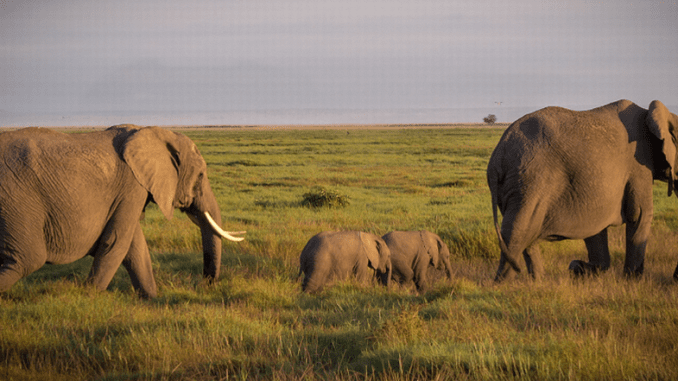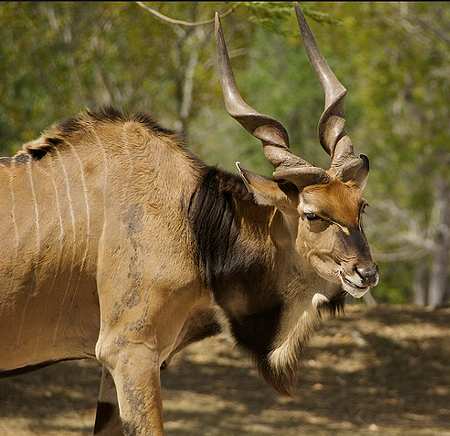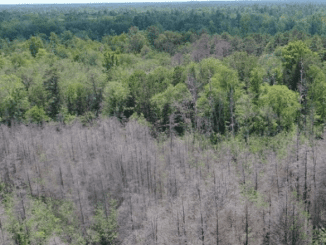
WASHINGTON, DC, October 12, 2021 (ENS) – An agreement to halt human-induced extinctions in 2022 is under consideration as countries gather online this week for the 15th meeting of the UN Convention on Biological Diversity, COP15.
The five-day meeting that opened Monday, after a year’s postponement due to the coronavirus pandemic, will set the stage for 2022 in-person negotiations in Kunming, China. There, governments are expected to adopt a new Post-2020 Global Biodiversity Framework to address the ongoing biodiversity crisis as plants and animals grow rare and then vanish into extinction.
In a keynote speech via video link, Chinese President Xi Jinping on Tuesday called for efforts to build a community of all life on Earth. “Protecting biodiversity helps protect Earth, our common homeland, and contributes to humanity’s sustainable development,” Xi said.
Xi announced that China will invest 1.5 billion yuan (US$232.7 million) to establish a Kunming Biodiversity Fund to support biodiversity protection in developing countries.
Inger Andersen, executive director of the UN Environment Programme, called the meeting “historic.” She told the audience in Kunming, “What we do will be remembered. Because we can no longer rely on biodiversity to operate like clockwork and deliver what humanity needs to survive.”
“The sustainable development goals (SDGs), and the goals therein to end hunger and poverty, depend on biodiversity and natural capital,” Andersen said.
“To achieve the SDGs, we need a natural capital stock up to 80 percent greater than we already have,” she warned. “So, we hold the futures of millions of people in our hands. We hold the survival of other species in our hands. We hold the future of economies and businesses in our hands.”
“The Framework’s implementation must come alongside a wider cultural shift on biodiversity, folded into a decade of action on climate, ecosystem restoration and so much more,” said Andersen. “The Framework’s implementation must come with an understanding that ONLY ambition and action across all elements of the Framework will get us to a nature-positive future.”
‘Fabric of Life is Unraveling’
The United Nations Biodiversity Convention functions as the premier international agreement on the conservation of living creatures, with 195 signatory countries and the European Union working toward sustaining life on Earth.
Elizabeth Maruma Mrema, executive secretary of the Convention on Biological Diversity, said safeguarding biodiversity is the defining task of this decade. “We risk repeating the failures of the last decade,” Mrema said. “Our commitments must be translated into effective policies and concrete actions.”

The draft Framework under discussion, which will become the Kunming Declaration, outlines a target of protecting 30 percent of land, fresh water and sea globally, and it calls for eliminating the discharge of plastic pollution by 2030, managing invasive species pathways, contributing to climate mitigation and increasing funding for conservation.
“Our planet’s fabric of life is unraveling, and it’s now or never to take a stand and declare that 2022 is the year we halt human-induced extinctions,” said Tanya Sanerib, international legal director at the US-based nonprofit Center for Biological Diversity.
As part of this week’s meeting, participants are considering a draft Framework that features a target directly addressing the harvest, use and trade of wild species of plants and animals.
The draft released in July recognizes that “urgent transformation of our social and economic models is required for biodiversity conservation and the recovery of natural ecosystems.”
It sets targets that recognize the benefits to conservation and humans resulting from the legal and sustainable use of wild species, in line with a September 2021 position statement from CITES Secretary-General Ivonne Higuero.
Richard Scobey, executive director of the UK-based wildlife traffic monitoring network TRAFFIC, agrees that sustainable use is a key to successful conservation, and he is optimistic that the updated Framework will be helpful in conserving what species remain.
“With a new target addressing harvest, use and trade of wild species, the Framework represents a significant milestone in tackling a key driver of biodiversity loss,” Scobey said. Its increased focus on sustainable use also provides a powerful incentive for the conservation of wildlife and recognizes its crucial contribution to the food security, health, livelihoods and well-being of humans.”
Plants and Animals Slipping Away, Species by Species
The world stands to lose one million species in the coming decades without a change from business as usual, according to a 2019 assessment by UN scientific advisors.
The May 2019 report from the United Nations Intergovernmental Science-Policy Platform on Biodiversity and Ecosystem Services, IPBES, identified the direct exploitation of animal and plant species, including harvesting, hunting, fishing and logging, as the second biggest driver of negative impacts on nature, after changes in land and sea use.
Other global indices show that 28 percent of assessed species are at imminent risk of extinction.
Vertebrate populations worldwide have declined by an average of 68 percent over the past 40 years, conservationists point out.

“Animals and plants are vanishing at an appalling rate, and the UN Biodiversity Convention’s scientific advisors say that nothing short of transformative change will stop this catastrophe,” Sanerib said. “The convention’s framework needs to focus on immediately halting human-caused species loss before we irretrievably lose life as we know it.”
The convention’s current draft framework calls only for reducing the rate and risk of extinction. It does not sufficiently acknowledge human exploitation’s role in species loss or the need for an immediate halt to human-caused extinctions, some conservationists say.
The Center said in a statement that, “despite the likely zoonotic origins of the COVID-19 virus and its probable ties to wildlife trade and exploitation, the framework only calls for such trade to be ‘safe for human health.'”
“G20 panelists have predicted a COVID-like event every decade. I for one don’t want to relive 2020 over and over again, and that requires a drastic reduction in commercial use of wildlife,” said Sanerib.
“We need to eliminate wildlife trade and exploitation that isn’t ecologically sustainable or legal or that threatens human or animal health,” she said. “This pandemic era is a symptom of the larger biodiversity crisis. Addressing this threat will also help curtail species loss, but action is needed now.”
The global Framework will be taken up in January 2022 at negotiations scheduled to take place in person in Geneva, Switzerland. The framework will then be presented for further deliberation and adoption at the second part of the UN Convention on Biological Diversity meeting planned for an in-person event in late April 2022 in Kunming, China.
Once completed and adopted, this Framework is intended to be used not only under the Convention on Biological Diversity and its Protocols, but also under other biodiversity-related conventions, the Rio conventions, other multilateral environmental agreements, other international processes and instruments, and the broader international community.
UN Convention on Biological Diversity Meeting Timeline
Oct. 11-15, 2021: Part one of the UN Biodiversity CoP15 held virtually.
Jan. 12-28, 2022: Intersessional Meetings, including in-person negotiations of the global framework, held in Geneva, Switzerland.
April 25-May 8, 2022: Part two of the UN Biodiversity CoP15 will be held in Kunming, China.
Featured image: Rare twin elephants, a male and female, were born at the end of May 2018 and lived with their parents until the female twin died in October 2018. Amboseli National Park, Kenya (Photo by RayinManila)



